I reported last week that Australians have become increasingly bullish on house prices, with the latest Westpac consumer sentiment index showing that house price expectations have surged to a cyclical high, coinciding with a strong rebound in the “time to buy a dwelling” index.

The auction market matches the surge in expectations.
Cotality reported that the monthly average national final auction clearance rate has risen to 68%, which is the highest rate since February 2024.
As illustrated in the following chart, higher auction clearance rates have historically been associated with rising home prices.
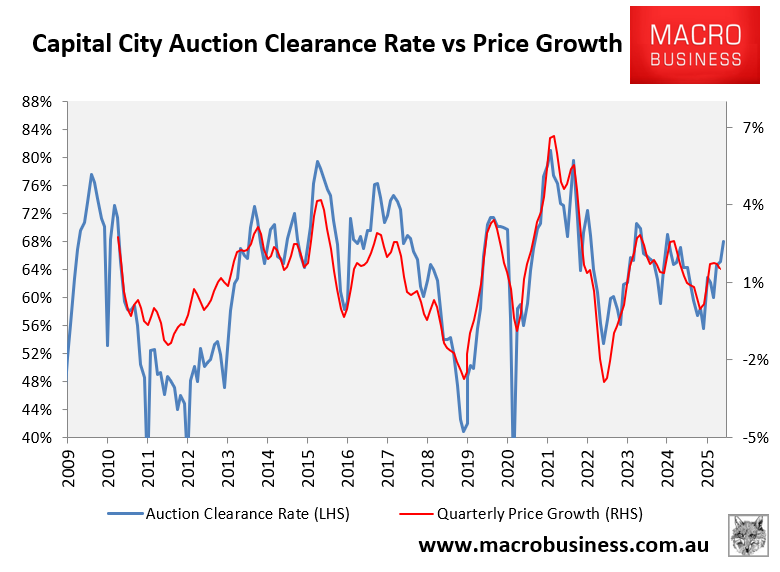
Cotality’s preliminary auction results from the weekend suggested that housing demand continues to strengthen.
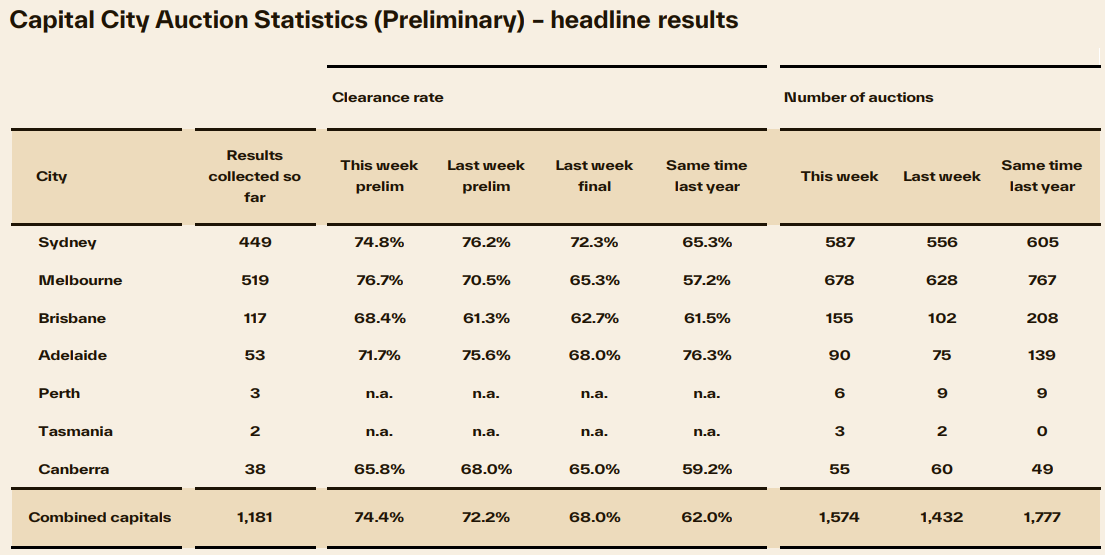
Preliminary clearance rates—week ending 20 July 2025.
The national preliminary clearance rate rose to 74.4% from 72.2% the week prior (revised down to 68.0% on final results, which was the highest final clearance rate since March 2024).
This was the second-highest preliminary clearance rate of 2025, just behind the final week of June (74.5%). It was also the sixth consecutive week that the preliminary clearance rate has held above the 70% mark.
Both Sydney (74.8%) and Melbourne (76.7%) recorded strong preliminary results.
However, on a monthly average basis, Sydney’s final clearance rates have been stronger than Melbourne’s recently.
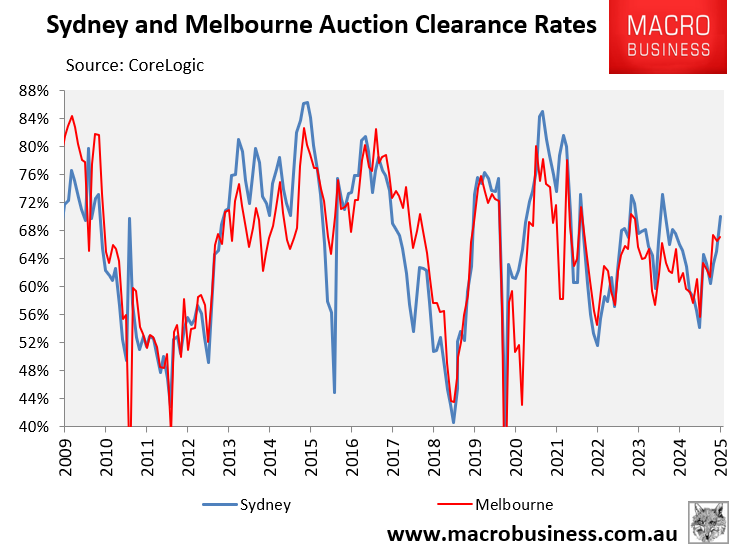
Given the apparent pent-up demand, it is highly likely that home prices will surge once the Reserve Bank of Australia (RBA) delivers further interest rate cuts.
While the RBA shocked the market and consumers at its last meeting by keeping the official cash rate on hold, last week’s weak labour force report for June from the Australian Bureau of Statistics (ABS) has all but guarnteed an interest rate cut at the August monetary policy meeting.
Indeed, financial markets expect another three 25 bp rate cuts over the coming year, which would come on top of the 50 bps of easing already delivered.
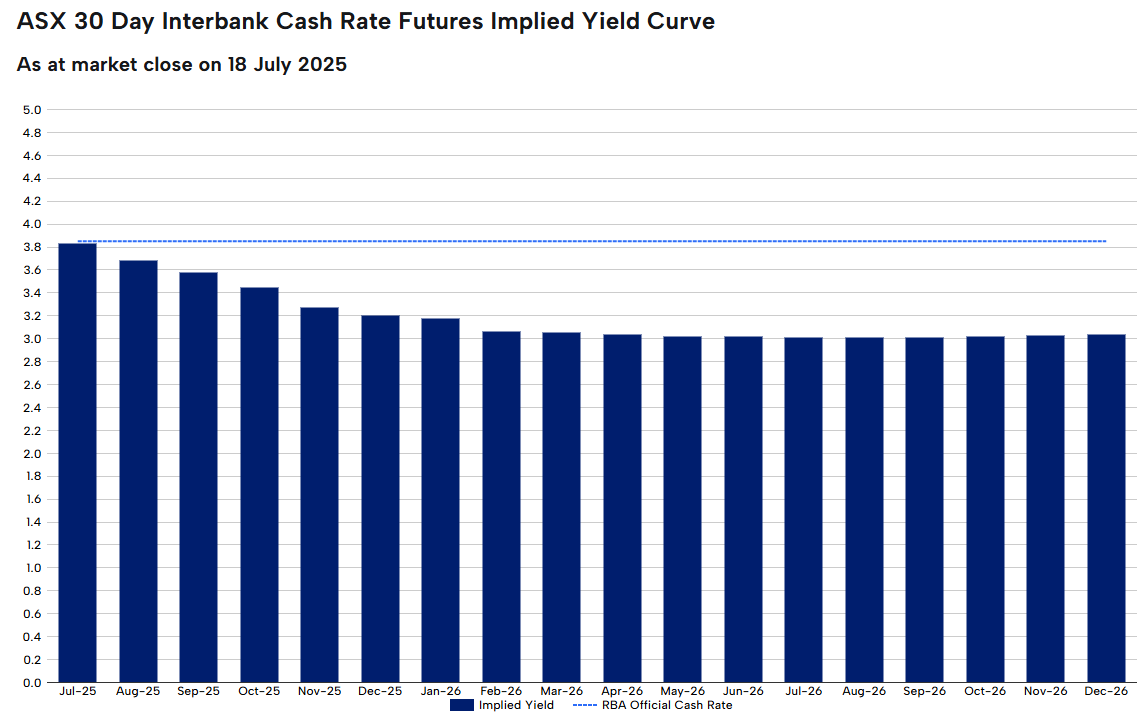
According to an analysis published recently in the Australian Financial Review, home prices normally increase by double digits after a rate-cutting cycle.
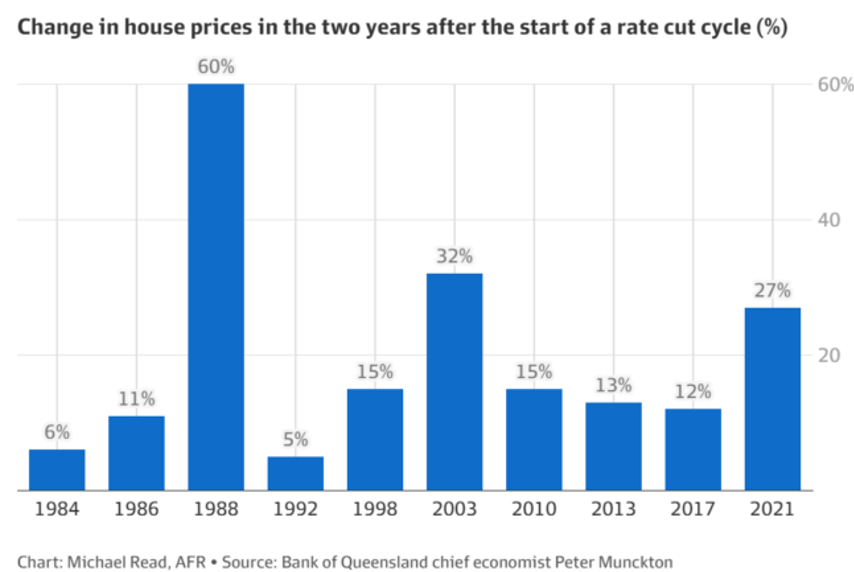
A slew of demand-side stimulatory initiatives are also expected to boost property prices.
These policies include the Albanese government’s 5% deposit scheme for first-time home buyers, the expansion of the Help-to-Buy shared equity scheme, changes to lending rules that prevent banks from including student debts in loan serviceability assessments, and a number of state government policies, such as the generous shared equity scheme announced in the most recent Queensland state budget.
The combination of interest rate cuts and stimulatory government measures will inevitably raise property values.
Australia’s housing stock was valued at $11.4 trillion in May, according to Cotality, with an average price per home of just above $1 million. The last thing the country needs is for property prices to rise further.
Australia is starting to resemble a housing bubble with an economy attached.

